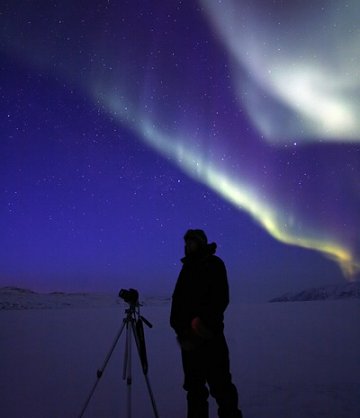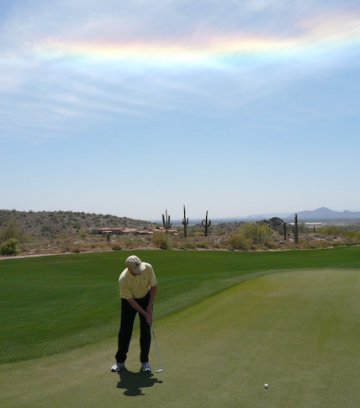| EXPLOSION IN PROGRESS : The Solar and Heliospheric Observatory is monitoring an explosion in progress on the sun. The source of the blast is not a sunspot, but rather an erupting solar prominence. A coronal mass ejection emerging from the blast site is not directed toward Earth; no impact is expected. It is, nevertheless, a good show. Readers with solar telescopes should train their optics on the northeastern limb of the sun. AURORA WATCH: High-latitude sky watchers should be alert for auroras. A solar wind stream is buffeting Earth's magnetic field and causing geomagnetic activity around the poles. Sylvain Serre sends this picture from just outside the village of Salluit in Nunavik, Canada: 
Photo details: Canon EOS 30D, 800 ISO, 15 sec
"I knew it was supposed to be a good night to observe the northern lights," says Serre. "So, I went with some friends and we found the sky filled with color." NOAA forecasters estimate a 20% chance of continued geomagnetic activity during the next 24 hours. Colorful skies may be found in Scandinavia, Iceland, northern Canada and Alaska. Stay tuned for new photos. April 2009 Aurora Gallery
[previous Aprils: 2008, 2007, 2006, 2005, 2004, 2003, 2002] GOLFERS LIGHT SHOW: "While golfing in Scottsdale, Arizona, yesterday I was treated to a bright light show in the sky," reports Gary J. Cooper. It was so distracting, he almost missed his putt: 
Cooper witnessed a circumhorizontal arc--a rainbow-colored band of light caused by the sun shining through plate-shaped ice crystals in cirrus clouds. They are a phenomenon of spring and summer, forming only when the sun is more than 58 degrees above the horizon. As the name suggests, these arcs tend to hug the horizon, showing themselves most often over flat, sunny places like desert golf courses. Look Fore! them, the next time you're on the green.
Explore the Sunspot Cycle | 
